Jakarta - A collection of Kampongs
Flying into Jakarta from Sulawesi brings us to the next part of our visit to Indonesia: Java. Java, the most populated island of this 17,500 islans nation, that spreads 5000 km or 3000 miles from east to west. Java counts 140 million inhabitants. Indonesia has about a 1000 inhabited islands, but 5 islands count for 225 million out of the 250 plus million citizens.
Our friend Daan and his beautiful wife Rina have us as their guests for a few days in Jakarta, the bustling 10 million large capital of Indonesia.
The first thing every visitor to Jakarta experiences is: traffic gridlock. Almost every waking hour of the workday here cars, buses and motorbikes move painfully slow in as many "lanes" as the road allows, zigzagging from lane to lane in a game of upmanship over the neighboring car, in the hope you may advance the next kilometer 1 minute faster, than the Toyota you are driving alongside off right now.
As Daan explains: 1. You need a driver experienced in this traffic, 2. You better get your self a comfortable car that allows you to work while sitting in traffic a few hours every day. 3. Don't try to accomplish more each day than traffic allows you.
The next two days we have Daan as our guide while his driver maneuvers us from location to location. Every time we exit the car, we leave knowing that the car will somehow finds us again for the next place we try to visit. Sometimes Daan has to use his phone to ask his driver to meet us at a curb.
Jakarta spreads out over 300 square miles (750 plus square km's) cobbled together out of 6 different towns, each with their own elected mayor ruling over districts, which are divided into villages or kampongs.
The dutch rulers which had a very small number of
(Why do Asian countries even former dutch colonies drive on the British side of the road?)
bureaucrats ruling this vast nation used the local existing political kampong system to govern the colony. By giving a lot of power to local leaders, they exacted loyalty and law and order and did the collection of taxes through existing channels of authority.
By the way that also expedited the demise of the colonial empire as loyalties switched from the bottom up to the call for independence by Sukarno and Hatta in 1945, when people like my father representing the dutch colonial government tried to reestablish their control.
You my reader may ask at this moment, why I digress into so much seemingly trivial detail, normally not pertinent to travel blog reporting?
Well, while traipsing all over Indonesia, one notices a remarkable neatness in maintaining roads, parks and sidewalks. One finds kampongs as illustrated in the pictures of this blog, where a maze of alleyways leads you into an area of communal housing built and maintained by the people for the people.
(The diorama story continues)
Whereas mighty high rises and construction pits loom around us, they seem to be the fill ins, right in the middle of an expansive vast sea of kampongs, self regulated by local chiefs, who settle their affairs in meetings with neighboring chiefs under the chairmanship of a district chief, who is reporting to mayors or regents (bupatis), who then report to a governor, who serves as an appointee to the federal government.
This system, where local issues are solved and acted upon at their own level, frees up the federal
(This not about the car, but about the lineup for the bus, moving just as slow as cars, even with bus lanes. The line continues behind two windows)
government to take care of big picture problems only, like infrastructure, economy, defense etc. I wish the federal government in the US would take lessons from this system, but this alas is not a political blog.
We first visited the freedom monument Monas or Monumen Nasional (Indonesians love abbreviations), with a large space below the 433ft (132 meter) high monument where dioramas explain the history of this nation from subjugation leading to their independence, in a way that the hundreds of schoolchildren gathered here can easily grasp. I have no pictures of this show and tell.
As they noticed us children seemingly lost their interest for history and gathered around Daan firing lots of questions at him. We found since that this happens all the time when foreigners are detected in the public arena. The official statistics list that less than a quarter of the 6 million visitors coming to Indonesia as tourists are white, thus from Europe or The Americas or Australia and New Zealand. Many kids have standing instructions to interview foreigners for their class projects. So they are elated when they discover an European or an American tourist (still visiting in low numbers), peppering them with questions about what they like most about their country and what food they like most and then have them compare it with something in the country they come from.
Finding our car we slowly eased our way to the old Batavia district, where we found the remnants of colonial buildings and ate in cafe Batavia, still showcasing its original rooms as it was built starting in 1805 as an administrative headquarters for the VOC (the dutch colonial trading company), since 1993 however it is a restaurant restored to its original glory). The plaza here is showcasing the olden dutch days, through its restored buildings.
A little further down one finds a most unique working harbor, the Sunda Kelapa harbor, where the two masted wooden phinisi ships load and unload their wares. These original giants, up to 200 gross tons, wooden hulled transporters of yesteryear still ply the Indonesian seas as they have done since the 14th century.
Built in only a few locations, where local shipbuilders (Bugis) master their craft, using carefully selected and divined wood (the wood is normally selected in the woods on the 5th and 7th day of the next moon cycle, after the contract for a new ship is concluded) in order to ensure a well constructed and seaworthy vessel.
The builders also receive their wages upfront so they can be constructing the ship without emotional stress, thus ensuring proper karma during the building process. Animal sacrifices are required before launching the vessel towards its destiny: the sea. It is however a dying industry and next generations may only see these beautiful ships on pictures or in a museum.
The highlight of the day however was our visit to the Ikan Pasar or fish market. What we did find here was not the fish market, as it was mid afternoon and the fish had already been sold, but the kampong or village where the people of this market live and commune. We entered a narrow laned maze of one or two room houses, built against each other with open front rooms used as shop or living room.
Communal showers and toilet facilities are strategically placed nearby. Children play in the alley ways. People walk and talk, a motorbike tries to maneuver on its way in or out of this kampong. TVs showing soccer games are intently watched in the room or from the alleyway by neighbors. Food smells linger and hair is being washed, cloth lines cross the alleyway. All in all you get the picture: in the middle of this giant city you find a glimpse of a self contained community going on with its daily life.
As we walk through, greetings are called out, we are ogled with the curiosity of people not used to strangers in these alleyways where the people intimately know each other as neighbors and friends, better than they know their siblings and family living elsewhere. The pictures show you how neat everything is. This community will not accept strife, theft or crimes. They will cohesively close ranks against outsiders and resolve their internal problems among themselves.
This visit was the end of a great touring day. The second day with Daan as guide did not proceed as planned.
Stay tuned.
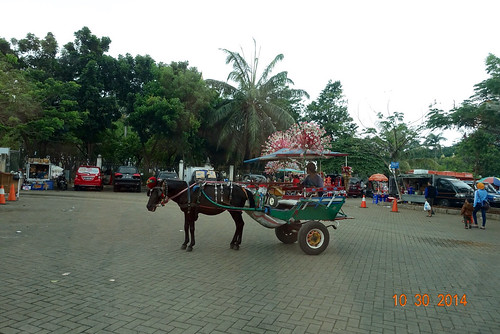
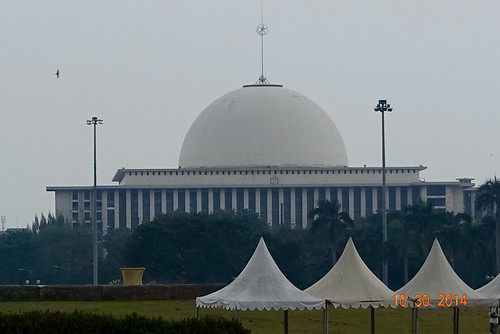


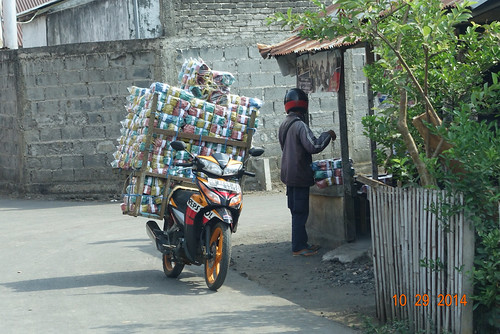

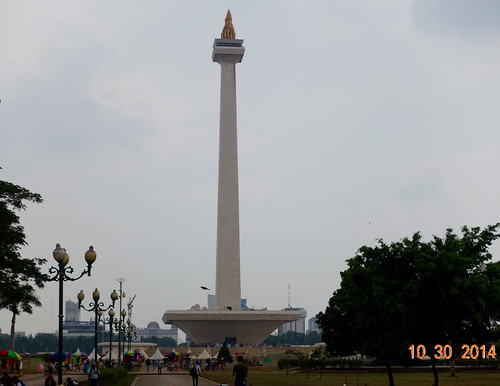
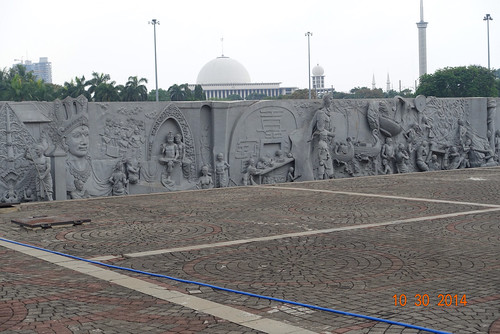
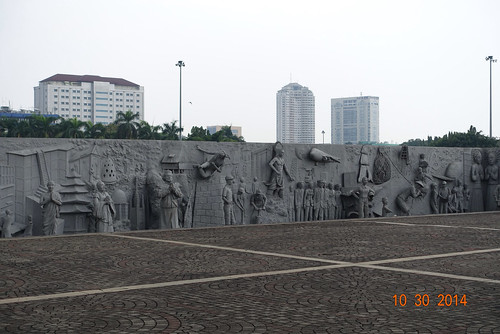
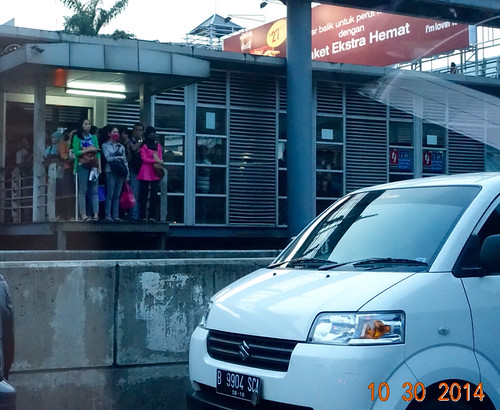
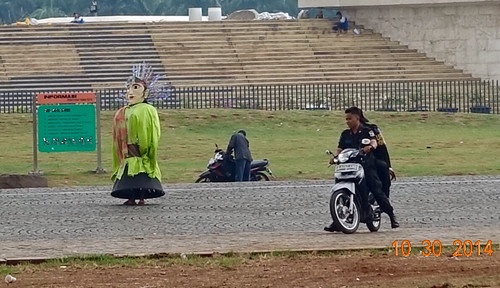
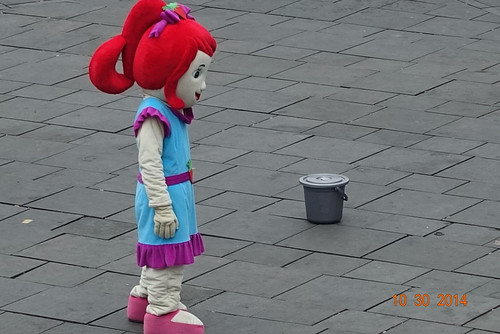
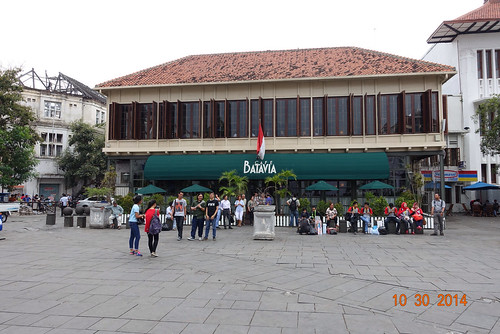
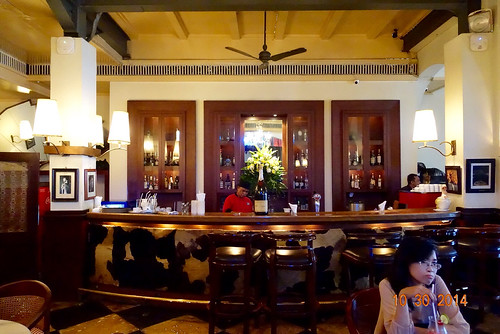
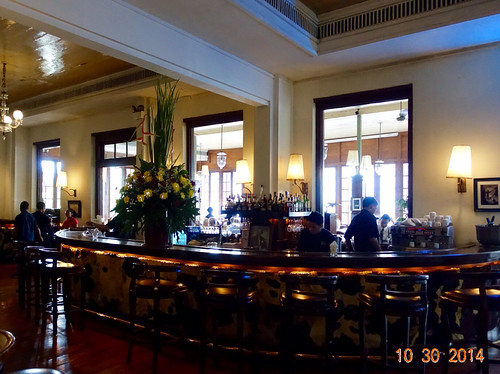
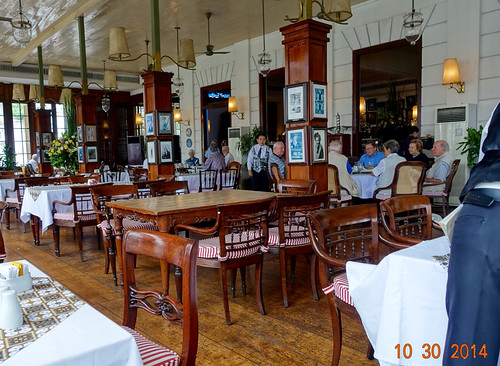
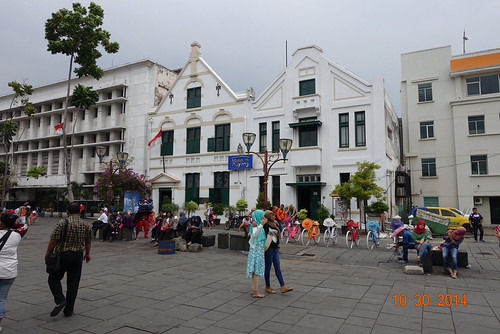
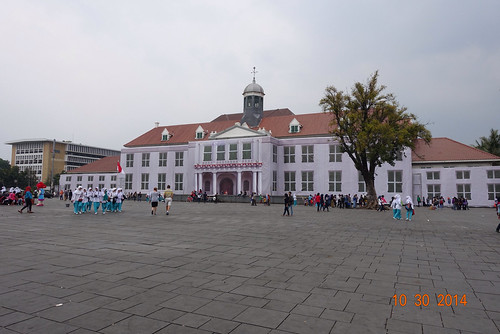


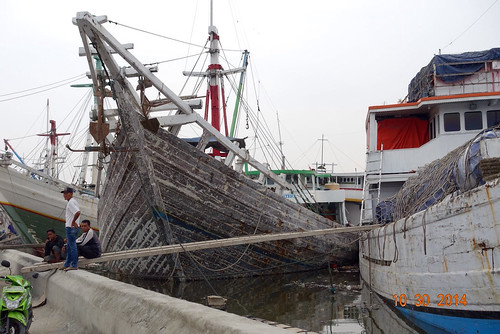
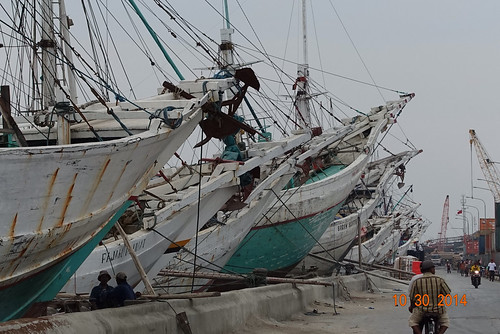
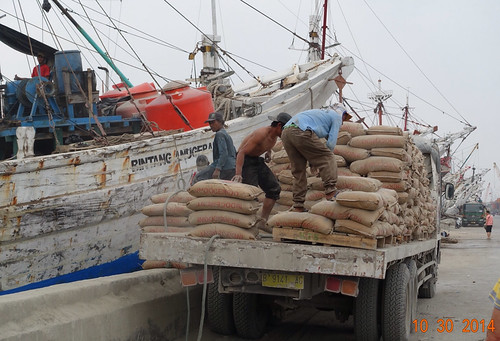

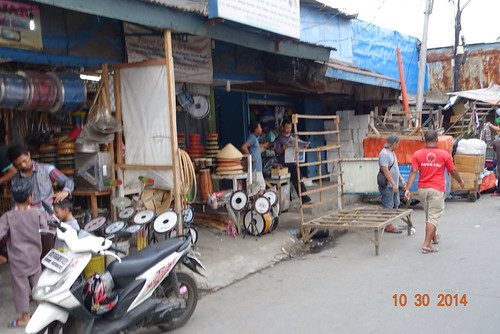
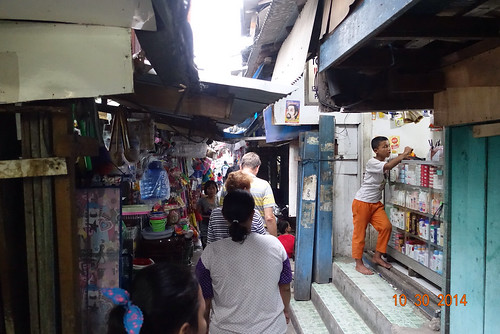
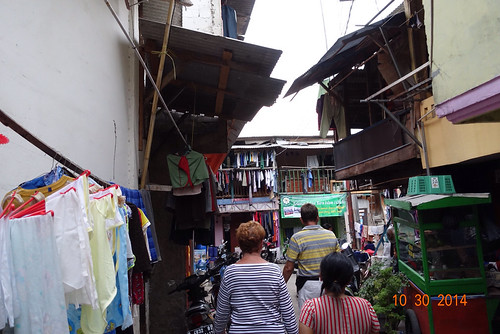
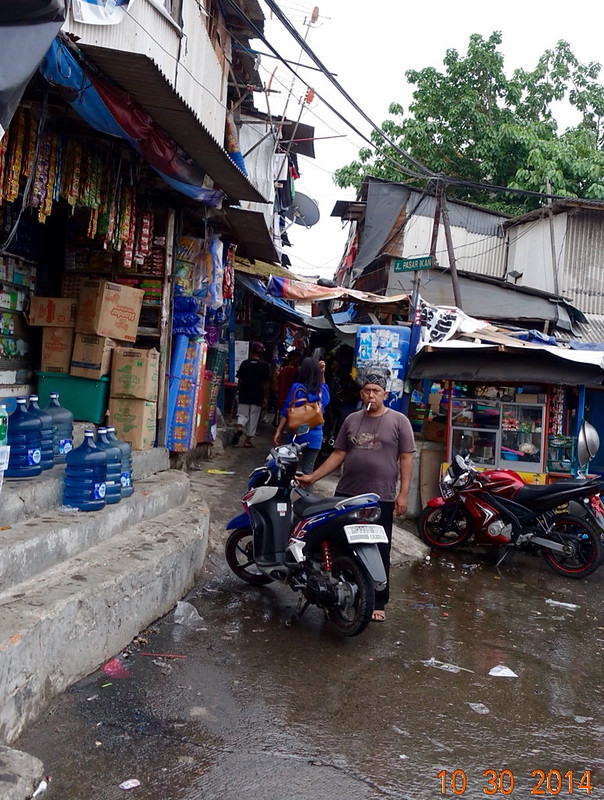
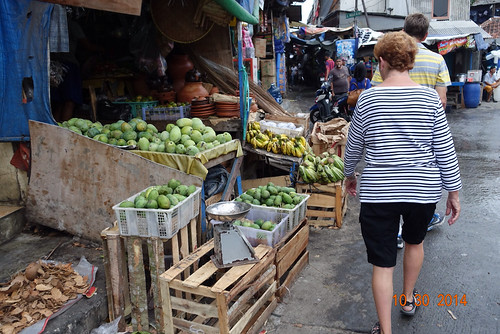


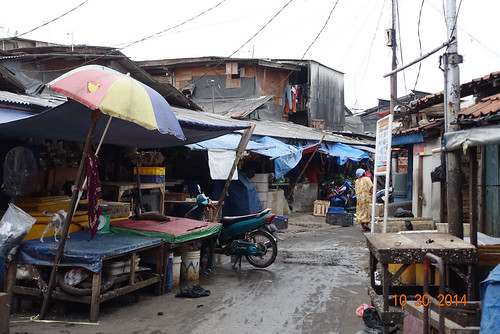


Comments
Post a Comment